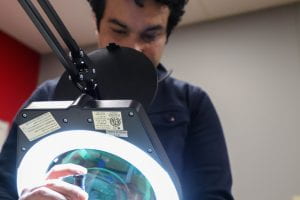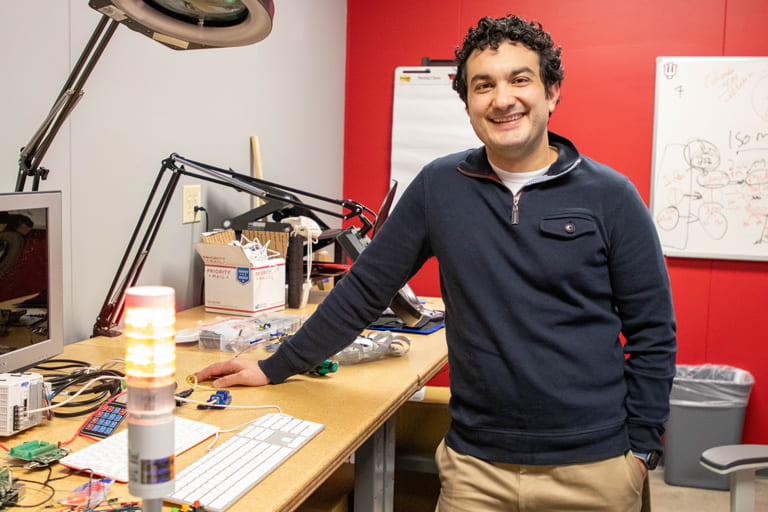Consider the screensaver on your computer: It turns off the screen after a set amount of idle time in order to conserve energy. Now consider a large manufacturing facility, and all the energy it uses. Could there be a way to put machines in “sleep mode” to conserve energy on a much larger scale? An Indiana University researcher is working to make this happen.
IU Kelley School of Business Assistant Professor of Operations Management Amrou Awaysheh studies sustainability.
“My research looks at what companies can do beyond basic philanthropy to help improve their impact on the environment or society, while still making a profit. Right now, I’m looking at what companies can do to reduce their energy consumption and impact.”

Awaysheh is working with large manufacturing facilities to consider the amount of energy they use on daily basis – and how that energy can be conserved. In the U.S. alone, he says, manufacturing facilities consume about $600 billion worth of energy every year.
“I work with facility managers and leaders to help them understand how much energy is being consumed when their machines aren’t in use but still powered ‘on.’ Think of it like the screensaver on your computer: When you don’t use it after 20 minutes or so, it goes into sleep mode to save energy. Typically, manufacturing facilities don’t shut down their equipment when it’s not in use, and we’re finding there is $60-$100 billion of energy wasted in manufacturing facilities a year.”
To gather the data needed within a manufacturing facility, Awaysheh is using Industrial Internet of Things devices, or IoT devices based in an industrial context. In this case, the devices are small smart meters Awaysheh places in facilities to collect data on energy consumption.
To do this work, Awayseh established the IoT Energy Efficiency Lab, housed inside the Indiana IoT Lab in Fishers, Indiana.

“In this lab, I’m working to develop the parts and components to make these smart meters. Metering the machines within the facilities will help managers better control certain machines or lines – to shut them down or reduce the energy when not in use. It’s like sleep mode for your manufacturing equipment.”
He explains further, “Think of your home: You may use a NEST thermostat to consume less energy when you’re not home or sleeping. We are also seeing utility companies installing smarting meters in your home to help you understand your energy usage in real time. In factories, where a lot of energy is consumed, we can install smart meters throughout the facility. This helps us understand the usage in different areas of the factory and consider how we can modify energy consumption to decrease overall costs. Every small change starts to pay back very quickly. We’ve seen more than $100 million of energy savings in just the US facilities where we’ve placed smart meters so far.”
Awaysheh says this is not only good for the environment, but it’s good for business – and the average person’s wallet.
“You’re using less energy and spending less on utility costs, which helps with the bottom line. When companies are using less energy, your utility bills are lower. This is also reflected in lower consumer prices and more profit for companies.”
“Most importantly,” Awaysheh explains, “this is about manufacturing competitiveness in the United States. When companies reduce their overall costs (and energy is a substantial cost) and improve cost structure, they are more competitive both here in the U.S. and globally. That’s what’s going to keep the economic engine humming.”

By: Teresa Mackin, tmackin@iu.edu, 317-274-2233
Leave a Reply